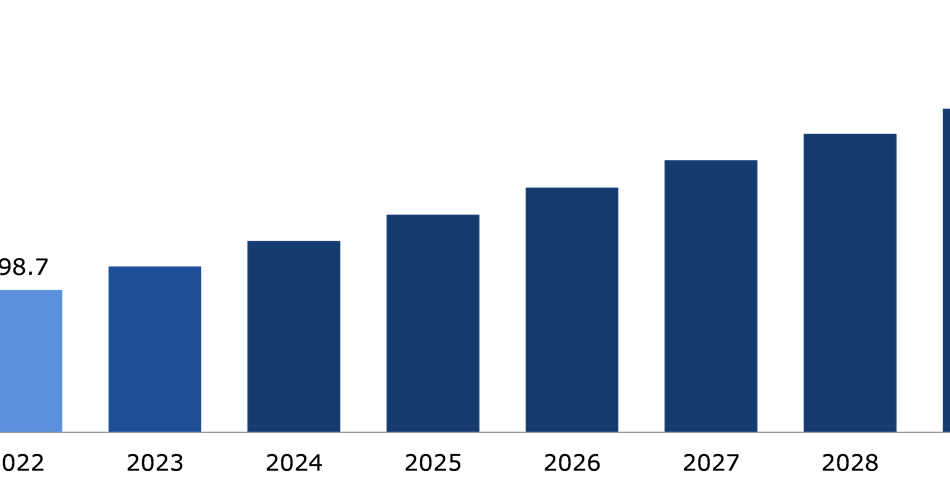Global Organic Food Market Analysis
The global organic food market size is predicted to garner a revenue of $483.0 billion in the 2022–2030 timeframe, growing from $168.5 billion in 2021, at a healthy CAGR of 11.7%.
Market Synopsis
Rising awareness about organic food among people across the world is one of the factors that is projected to accelerate the growth of the organic food market. Moreover, rising public concern over the use of hazardous chemicals in agriculture & farming, as well as their detrimental health effects on consumers, has resulted in an increase in demand for organic foods globally. In addition to this, rising prevalence of chronic diseases such as cancer, diabetes, and cardiovascular diseases, infectious disease, as well as the burden of healthcare expenditure and the health-consciousness trend is driving consumers to adopt healthy and high-quality foods and beverages.
On the other hand, the high cost of production & operations, as well as the short shelf life is expected to limit market growth. Furthermore, expensive product cost is preventing widespread customer acceptance, and limited product selection possibilities are also limiting market expansion. All such factors are restricting the market growth of organic food.
According to the regional outlook, the North America organic food market is expected to create massive growth opportunities for market investors by growing at a CAGR of 12.7% during the review period owing to the presence of large number of retail shops such as Walmart, Costco, and many other
Organic Food Overview
Organic food is being produced by various methods of farming without using any preservatives or chemicals. The term organic farming is referred to farming by using various organic techniques in the farm. Organic farming involves the use of natural fertilizers like manure to improve plant growth. Moreover, animals raised organically are not given any hormones for faster growth and are raised giving natural elements such as healthy diets. Furthermore, organic foods are in high demand in both the domestic and international markets due to their high nutritional content such as vitamins, minerals, fiber, carbs, and calcium abundant in fruits and vegetables; such aspects are expected to drive product demand.
COVID-19 Impact on Organic Food Market
The COVID-19 has had a significant impact on the organic food industry. Due to the uncertainty, consumer purchasing patterns have changed as consumers have become more aware of the importance of a strong immune system, resulting in a preference for organic and natural foods. Moreover, following the epidemic in 2020, there has been a paradigm shift in the organic food industry with consumers beginning to buy more organic commodities as a preventative health measure. This shift in mindset is expected to continue to fuel the organic food market's future growth. In fact, the organic food industry, particularly in fruit & vegetables, has expanded globally. Moreover, there are certain key players that have experienced demand for organic foods; for example, General Mills Inc., US based consumer goods company, revealed that they have experienced increase of 8% in net sales especially in organic food industry. All such aspects are expected to help boost organic food demand.
Increasing Awareness about Fitness, Health, and Wellbeing Drives the Organic Food Market Globally
Organic food is prepared without using any chemicals and therefore it means that the organic food restricts the use of chemical pesticides, preservatives, or fertilizer and is farmed using natural resources. Thus, they are considered as healthy food. Such factors will augment the market growth for organic food. Moreover, more people are accepting organic food due to the presence of multiple benefits, which is predicted to be the major driving factor for the global organic food market in the estimated period. Moreover, with the changing lifestyle, consumers are more concerned about their health, so they prefer organic food over other confectionary foods. In addition to this, improved distribution channel and rise in the income level among the population are predicted to be few of the biggest driving factors for the global organic food market in the estimated period.
Furthermore, to strengthen their portfolio offering in the industry, key market participants focus on strategies such as innovation and new product in the market. For instance, Amy's Kitchen, a manufacturer of frozen organic meals and shelf-stable soups, established a new pizza production plant in San Jose, California, in November 2020. Therefore, all such aspects and company developments are projected to gain traction for organic foods.
High Cost and Short Shelf Life of Organic Food Might Restrict the Global Organic Food Market Growth
Organic food production costs are often high due to increased labor inputs and a wider range of businesses. This raises the final retail price, which is expected to be the most significant limitation for the global market over the forecast period. Furthermore, organic food has a short shelf life, which is expected to limit market growth throughout the forecast period. Moreover, costly packaging, shipping, and distribution costs are stifling the organic food market’s expansion to increase shelf life.
Demand for Organic Poultry is Expected to Increase the Opportunities in the Organic Food Market
Organic poultry is a novel method of raising live stoke. Commercially grown poultry often contains artificial hormones, antibiotics, and tiny quantities of pesticides compared to organic poultry as organic poultry is free from any artificial constituents. Because the animals take up less area and grow to huge sizes relatively rapidly, organic chicken farming is considered as more beneficial than other forms of organic meat production. All such elements will accelerate the market growth of organic food market. Moreover, demand for health-beneficial items is increasing as people's lifestyles change around the world. Also, now-a-days, consumers are aware of the safety and quality of organic products, the market is expanding because consumers are prepared to pay high costs.
Furthermore, governments have initiated certain certifications to verify that each product is organic and sustainable. For example, according to Section 22 of the Food Safety Standards Act, 2006, the Food Safety and Standards Authority of India (FSSAI) is responsible for regulating the manufacture, distribution, sale, and import of "organic foods." Thus, such factors create an opportunity to gain major pull in the coming years for organic food market.












